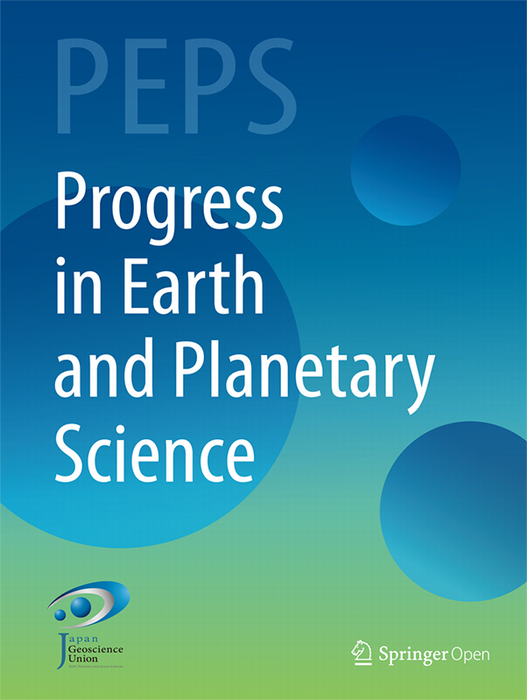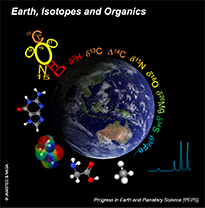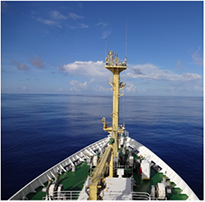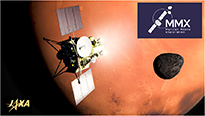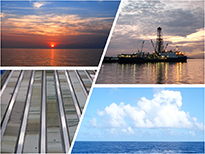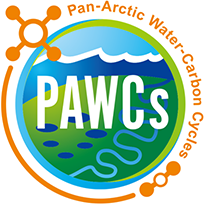1957~1958年に、国際地球観測年(International Geophysical Year, IGY)という、歴史始まって以来の大規模な地球研究がおこなわれました。このプロジェクトの委員長であったSydney Chapman博士は、アラスカ大学 地球物理研究所での私の先生でしたが、IGYオーロラ観測プロジェクトの委員長でもありました。彼は特に極地圏各地でオーロラ観測を全天カメラで1分ごとに写真を撮ることを主張し、その写真はアラスカ大学の地球物理研究所とモスクワの電波研究所に集められました。
私は、その各地で同時に写された写真により、極地全体にわたって同時に記録されたオーロラ活動を研究するという、オーロラ研究の歴史でも最初のプロジェクトを手掛ける幸運に恵まれました。
例えば、アラスカで真夜中に活発なオーロラ活動が始まった時、シベリア(夕方)やカナダ(朝方)でどのような活動が起きているのかという研究が始まりました。それによると、オーロラ活動は最初真夜中に起き、真夜中を中心に爆発的に活発になり、その影響が夕方(シベリア)と朝方(カナダ)に伝播して行くこと、そしてその全体的な活動は約3時間で終息し、活発な夜にはこれが数回繰り返されることが分かりました。
その研究成果は1964年に発表され、「Auroral substorm」という学名のもとに、多くの研究者がその結果に沿って一緒に研究をしてきてくれました(日本では「オーロラ爆発」という名が使われています)。
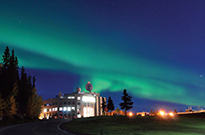
Quiet auroral curtains over the Syun-Ichi Akasofu Building
(Photo courtesy of International Arctic Research Center, University of Alaska Fairbanks)
1960年代は、人工衛星による宇宙観測が始まった「宇宙時代」の夜明けでもありました。そして、地球の周りの宇宙空間の研究が始まり、地球には磁気圏という太陽風によって作られた、彗星のような形をした宇宙空間があることから、磁気圏物理学という分野ができました。オーロラは当然、私の論文の題にもあるように、放電現象であり、磁気圏の電磁現象と直結していますので、Auroral substormの研究は磁気圏研究と一緒におこなわれてきました。
私と少数のグループは、主として地上におけるオーロラと地磁気嵐の研究を続けてきました。これは非常に時間を要する研究でしたが、その立場からの研究を通じて、オーロラ放電の電力の発電過程からオーロラ放電に至るまでの過程を自分なりに理解できたと思います。すなわち、太陽風と磁気圏の相互作用が発電機であること、そしてその電力を求め、オーロラ現象はその電力の消費現象であるという理解のもとに、それを定量的に(と言ってもまだ第一近似ですが)証明しました。
私の論文は、その自分なりに分かってきたこと、まだ解明できていないこと、そして今後若い人達にどのように研究を進めたら良いかについて、私の思うところを書いたもので、私自身の50年間の研究のまとめとして書きました。
Auroral substormの研究は各国でおこなわれていますが、その一つの国際グループはInternational Conference on Substorms(ICS)と呼ばれ、世界各国が持ち回りで開催しています。2014年は私の論文の50周年記念ということで、12回目の国際シンポジウム(ICS-12)が、名古屋大学の太陽地球環境研究所等の主催でおこなわれました。Chairの一人である同研究所の塩川和夫教授によると、ICS-12の論文はJpGUのPEPSでも発表できるとのことでしたし、AGUでPEPS事務局の皆さんとお会いし、新しいジャーナルであることを知り、投稿した次第です。
1960年代では、各地の全天カメラの写真一枚一枚を解析し、磁力計の記録を各地から取り寄せてデジタル化して研究していました。現在は人工衛星で極地上空からの映像を見ることができ、隔世の感がありますが、幸い、全天カメラの写真の解析の正確さが人工衛星の映像によって確認されたのが何よりでした。
